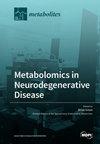Improving Resistance of Mango to Colletotrichum gloeosporioides by Activating Reactive Oxygen Species and Phenylpropane Metabolism of Bacillus amyloliquefaciens GSBa-1
IF 3.4
3区 生物学
Q2 BIOCHEMISTRY & MOLECULAR BIOLOGY
引用次数: 0
Abstract
This study aimed to explore the effects of Bacillus amyloliquefaciens GSBa-1 treatment on anthracnose disease resistance and the metabolism of reactive oxygen species (ROS) and phenylpropanoids in mangoes during storage. Mangoes were soaked in a solution containing 1 × 108 CFU/mL of B. amyloliquefaciens GSBa-1. The anthracnose disease incidence, disease index, respiration intensity, ethylene release, reactive oxygen species content, and the activities of related metabolic enzymes, phenylpropanoid-related metabolic enzymes, and phenolic acids in the skin and pulp of mangoes were investigated under normal temperature storage conditions. The results showed that the antagonistic bacterial treatment (ABT) did not significantly inhibit the growth of Colletotrichum gloeosporioides in vitro. However, it significantly reduced the incidence of mango anthracnose disease when applied to the mango peel. ABT enhanced the latent resistance of mango to anthracnose disease by activating its reactive oxygen and phenylpropanoid metabolism. It maintained higher levels of ROS production and elimination in the peel. Moreover, it rapidly activated manganese superoxide dismutase, induced the accumulation of H2O2, and enhanced the activity of manganese superoxide dismutase, catalase, ascorbate peroxidase, and peroxidase in the mango peel. Furthermore, ABT activated phenylalanine ammonia-lyase, cinnamic acid-4-hydroxylase, 4-coumaroyl-CoA ligase, and cinnamyl alcohol dehydrogenase in the mango peel and pulp, promoting the accumulation of antifungal phenolic acids such as gallic acid, catechins, and ellagic acid. Bacillus amyloliquefaciens GSBa-1 may be a potent inhibitor of mango anthracnose, primarily enhancing the resistance of mangoes to anthracnose by synergistically activating ROS in the peel and phenylpropanoid metabolism in the pulp, thereby reducing the incidence of anthracnose effectively.通过激活淀粉芽孢杆菌 GSBa-1 的活性氧和苯丙氨酸代谢,提高芒果对球孢子菌的抗性
本研究旨在探讨淀粉芽孢杆菌 GSBa-1 处理对芒果贮藏期间炭疽病抗性以及活性氧(ROS)和苯丙酮类代谢的影响。将芒果浸泡在含有 1 × 108 CFU/mL B. amyloliquefaciens GSBa-1 的溶液中。研究了常温贮藏条件下芒果的炭疽病发病率、病害指数、呼吸强度、乙烯释放量、活性氧含量以及芒果皮和果肉中相关代谢酶、苯丙类代谢酶和酚酸的活性。结果表明,拮抗细菌处理(ABT)在体外并不能明显抑制球孢子菌的生长。但在芒果皮上施用时,它能明显降低芒果炭疽病的发病率。ABT 通过激活芒果的活性氧和苯丙氨酸代谢,增强了芒果对炭疽病的潜在抗性。它能在果皮中保持较高水平的 ROS 生成和消除。此外,它还能迅速激活锰超氧化物歧化酶,诱导 H2O2 的积累,并增强芒果果皮中锰超氧化物歧化酶、过氧化氢酶、抗坏血酸过氧化物酶和过氧化物酶的活性。此外,ABT 还能激活芒果皮和果肉中的苯丙氨酸氨解酶、肉桂酸-4-羟化酶、4-香豆酰-CoA 连接酶和肉桂醇脱氢酶,促进没食子酸、儿茶素和鞣花酸等抗真菌酚酸的积累。淀粉芽孢杆菌 GSBa-1 可能是芒果炭疽病的强效抑制剂,主要通过协同激活果皮中的 ROS 和果肉中的苯丙醇代谢,增强芒果对炭疽病的抗性,从而有效降低炭疽病的发病率。
本文章由计算机程序翻译,如有差异,请以英文原文为准。
求助全文
约1分钟内获得全文
求助全文
来源期刊

Metabolites
Biochemistry, Genetics and Molecular Biology-Molecular Biology
CiteScore
5.70
自引率
7.30%
发文量
1070
审稿时长
17.17 days
期刊介绍:
Metabolites (ISSN 2218-1989) is an international, peer-reviewed open access journal of metabolism and metabolomics. Metabolites publishes original research articles and review articles in all molecular aspects of metabolism relevant to the fields of metabolomics, metabolic biochemistry, computational and systems biology, biotechnology and medicine, with a particular focus on the biological roles of metabolites and small molecule biomarkers. Metabolites encourages scientists to publish their experimental and theoretical results in as much detail as possible. Therefore, there is no restriction on article length. Sufficient experimental details must be provided to enable the results to be accurately reproduced. Electronic material representing additional figures, materials and methods explanation, or supporting results and evidence can be submitted with the main manuscript as supplementary material.
 求助内容:
求助内容: 应助结果提醒方式:
应助结果提醒方式:


